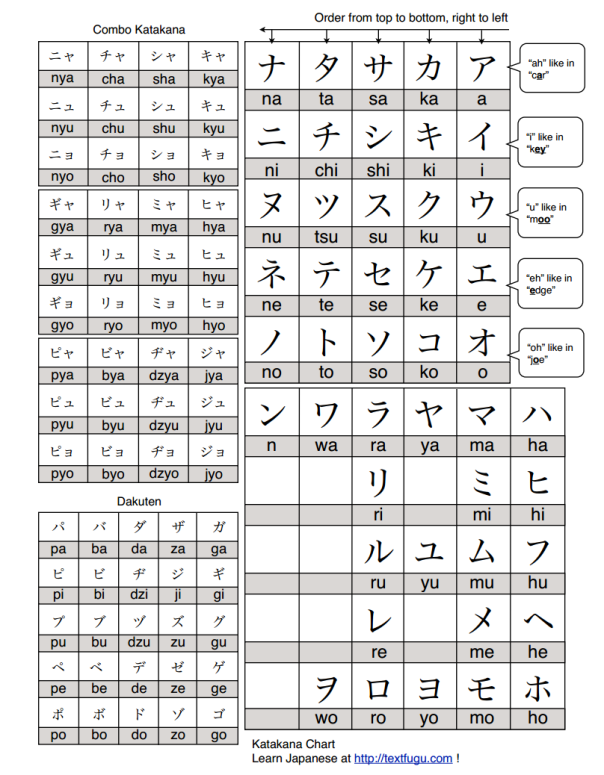You know how you listen to things in another language, and they’re nice and all, but they just don’t quite match up to the original version?
This does. Listen to it, you won’t be disappointed ^^
Here is a chart of the numbers in French from 0 ~ 59 (zéro ~ cinquante-neuf).
The pattern is very simple once you learn the numbers 1 ~ 10 (plus the odd ones: 11, 12, 13, 14, 15 and 16).
For 17, the number is made of the word for 10 + 7 = dix-sept, with a hyphen (-) separating the two numbers.
18 and 19 are the same. 10 + 8 = dix-huit and 10 + 9 = dix-neuf.
Nice and simple.
After that, a good point to start with is learning the multiples of ten (20, 30, 40, 50 etc.), because once you know those, you can follow the pattern above (20 + number =…; 30 + number =…).
For example:
22 = 20 + 2 = vingt-deux.
33 = 30 + 3 = trente-trois.
44 = 40 + 4 = quarante-quatre.
Anyway, you get the gist.
Now, you might have noticed that 21, 31, 41 and 51 are a bit different. It still follows the same pattern, but instead of hyphenating the two numbers together like the rest, there is an «et» between them, meaning “and”. Why? No idea. That’s just how it works.
So, 21 = 20 + 1 = vingt et un.
Not too shabby, non? =D
Pre-warning: Part 2 will blow your mind (if you don’t believe me…you’ll see, trust me).

Here’s the katakana chart in the same layout as the hiragana one I posted earlier.
It’s got the dakuten (ten-ten), and the syllable combos. The hiragana and katakana are the same…the characters are just written differently.
Enjoy~! ^^
One of the first things you’ll want to do is be able to introduce yourself to someone.
Here’s what a basic intro looks like:
はじめまして。リンガルイズムです。よろしくおねがいします。
Can’t read it or don’t know what’s going on? Here’s the breakdown:
Basic Structure:
[Your name] + [です・desu]
E.g. Lingualism です。
NOTE: In Japanese, foreign names and words use the ‘katakana’ writing system, which is similar to hiragana.
Using katakana, my blog name becomes: リンガルイズム・ringaru-izumu. Unlike hiragana, katakana often uses 【ー】 to indicate a lengthened sound.
Adding more:
When meeting someone for the very first time only, people say 「はじめまして・hajimemashite」.
NOTE: Don’t say it to someone you’ve already met…they’ll think you’ve forgotten them already =P
Then, they introduce themselves:
eg. はじめまして。 リンガルイズムです。
Closing the introduction:
To end your intro politely, you can add 「よろしくおねがいします・yoroshiku onegaishimasu」。It means “please treat me well”.
よろしく・yoroshiku = well; appropriately etc.
おねがいします・onegaishimasu = please.
Our intro now looks like this:
eg. はじめまして。 リンガルイズムです。よろしくおねがいします。
簡単ね!・かんたん ね!・Kantan ne! = It’s simple! Feel free to introduce yourself in the comments (^_^)/
Verb = an action/doing word (including existence)
E.g. eat, jump, run, play, etc.
Infinitive = simplest verb form, in the form of ‘to [verb]’.
E.g To eat, to jump, etc.
Infinitive verbs can end in three ways:
Conjugate = to change verb into a different tense
e.g. Present tense of ‘to play’ (jouer):
Regular Verb = conjugates according to a pattern.
(‘Jouer’ is a regular verb)
Irregular Verb = doesn’t conjugate to a pattern (have to learn them off-by-heart)
e.g. Aller = to go, is an IRREGULAR ‘ER’ verb. Conjugating to present tense:
Just a quick crash course in the French verb terminologies.
À bientôt! ^.- )/ (See you later!)
おじゃまします translates into ‘sorry for disturbing you’ and essentially means the same sort of thing as しつれいします. It’s more preferred in informal situations, like entering or leaving your friend’s house, because it sounds softer.
NOTE: when entering somewhere it’s おじゃまします (present tense), and when leaving it’s おじゃましました (past tense).